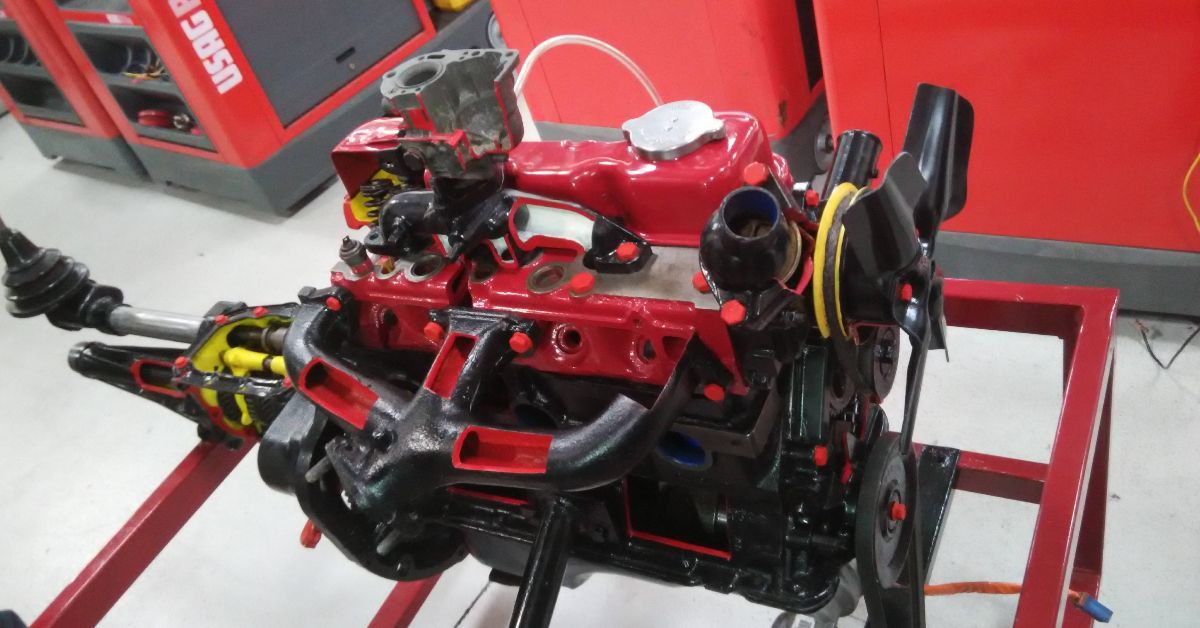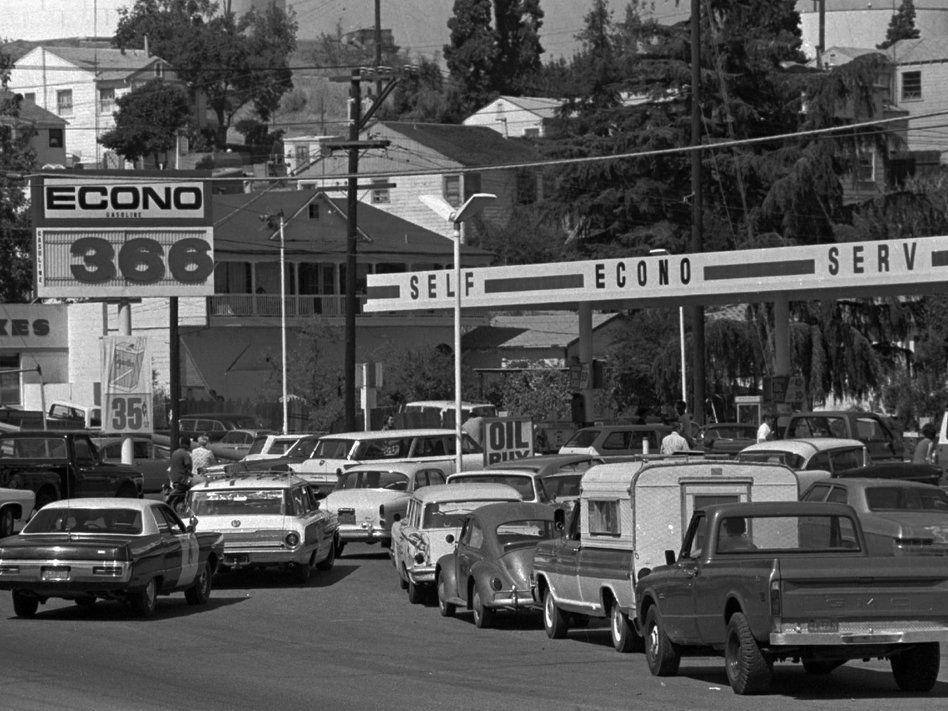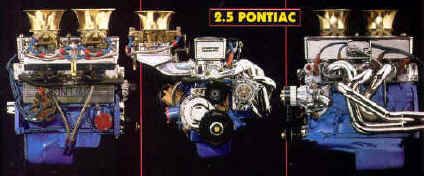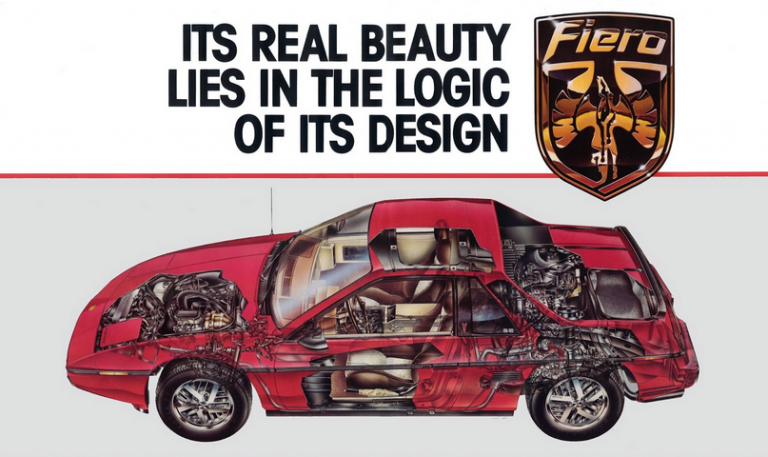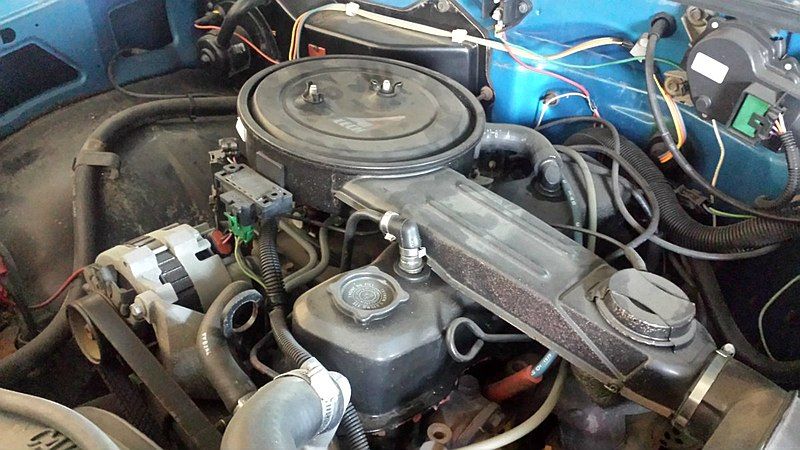The Iron Duke. The mere mention of this infamous powerplant will quickly draw rolling eyes from any automotive enthusiast, especially those in the GM and Pontiac camps. Derided for being anemic at best, and noisy when pushed, the Iron Duke was nobody's favorite engine, forever juxtaposed with the tire-shredding power of the late Muscle Era, which had just drawn to a close. Double-digit power numbers don't really inspire loyalty or confidence in any potential buyer, but in the midst of the Malaise Era, there weren't many practical alternatives.
Even after the Duke's "Tech IV" update from carburetor to fuel injection (albeit crudely, in the form of throttle body injection), Car and Driver sardonically referred to it as the "Low-Tech IV." But what has this engine done to earn such a groanworthy reputation - and does it really deserve all the hate?
Before making any judgments, we need to examine the circumstances which influenced GM's early development decisions, what platforms ran on this engine, changes to the Duke through its sixteen year lifespan, and the legacy it left behind.
A Product Of Its Time
In 1973, a war erupted between Israel and a coalition of Arab states, known as the Yom Kippur War. Though it only lasted from October 6th to the 25th, it would have lengthy and costly effects on Israel's allies, one of which was the United States. The Organization of Arab Petroleum Exporting Countries declared an oil embargo against supporters of Israel in the midst of this war, continually raising prices for targeted countries, well after the end of the brief conflict.
As intended, these astronomical price increases led to oil and gas shortages across the United States, which in turn caused extremely long lines at the pump. This also resulted in policies like odd-even fill-up days, which only allowed people with license plates ending in an odd number to fill on odd days, and vice versa. By the end of the embargo in March of 1974, the price for a barrel of oil had risen almost 400%, and the price at the pump reflected it.
At the same time, the newly-formed Environmental Protection Agency was attempting to reign in skyrocketing air pollution, which meant a slew of new emissions standards for automotive manufacturers to meet. The Clean Air Act of 1970 put the squeeze on the automotive industry to reduce hydrocarbon, carbon monoxide, and oxides of nitrogen by 90 percent, by the year 1975.
Further push for change came in the form of the Gas Guzzler Tax, as part of the National Energy Act of 1978. This legislation imposed considerable tax burdens for purchasing passenger cars on a sliding miles-per-gallon scale, with greater penalties as efficiency dropped. SUVs were excluded, as at the time, they were not really used outside of commercial ventures. The primary burden fell on large passenger cars, which manufacturers quickly lost interest in producing. Thus, the SUV market was born; although they were often comparably, or even less efficient than full-size sedans, they became the cheaper option, and could still use the existing larger engine designs.
However, the majority of the population still wanted passenger cars, and they now had to be fuel efficient enough to potentially go multiple weeks between fill-ups, and still get their owners to work. In order to meet this demand, and adjust to the new EPA standards, the industry would have to invest in some fresh engineering. Pontiac's answer was dubbed the Iron Duke.
Initial Development
With the combination of widespread concerns over an uncertain gasoline supply and the advent of more stringent environmental regulations, the Pontiac division of GM began examining options for a new powerplant. At the time, the smallest displacement engine being produced by the company was 350 cubic inches, or 5.7 liters. There was a lot of efficiencies to be gained by reducing the number and size of the cylinders, which would then require less fuel to run. Engineers considered a number of options: new V8 engines with less displacement, a 90-degree V6 or V4 based on existing V8 designs, an inline four-cylinder (L4) based on one bank of an existing V8, an S-4 incorporating cylinders 1, 4, 6, and 7 from an existing V8, a brand new L4, and a brand new inline-six.
Ultimately, GM decided that the best results would be gained by designing a new inline four cylinder engine. Their self-described goals for this engine were as follows: minimize noise and vibration, maximize usable power, and achieve excellent durability, driveability, and fuel economy. An internal review revealed that GM do Brasil was already producing a 2.5L L-4 engine with a head start on these operating characteristics, so this became the starting point for the new Pontiac engine. Although they utilized similar design principles, the engine which would ultimately become the Iron Duke did not end up sharing any parts with its South American cousin.
Jack Of All Trades
The Iron Duke started its life in 1977, debuting in the growing subcompact segment of cars to power the Sunbird and the Astre, both made by Pontiac. It was also used in the compact Ventura, which became the Phoenix the next year. All of these cars were altered forms of what were originally Chevrolet models (the Vega, Monza, and Nova, respectively), so in order to bolt up correctly to the transmission, the Iron Duke needed to use the Chevrolet bellhousing pattern, rather than the one shared by Pontiac, Buick, and Oldsmobile.
By the next year, the Duke would also run the Chevrolet Monza and Oldsmobile Starfire, which were essentially twins with different badging. In 1980, GM began to sell Iron Dukes to AMC, which utilized it as a base engine for their Spirit, Concord, Eagle, and Jeep CJ. This continued until 1984, when AMC replaced it with a 2.5L 4-cylinder engine of their own design.
The Iron Duke would also go on to be installed in many other models in the GM stable. GMC used it in the Safari, Sonoma, and the Jimmy. Chevrolet powered their Astro, Celebrity, Citation, S-10, S-10 Blazer, and Lumina with it. Buick put it in their Skylark, Skyhawk, Somerset, and Century. Oldsmobile equipped their Omega and Cutlass with it. Pontiac would use it in the 6000 and the Grand Am. While not exactly providing a thrill of a driving experience, the Duke served all these platforms humbly and reliably.
However, the most infamous (and damning) pairings had to be with the Pontiac Fiero and Firebird, and the latter's Chevrolet sibling, the Camaro. Reviews of these cars were particularly harsh, and rightly so - the Iron Duke was never meant to be a high-revving, high-power sports car engine. People expected cars of this styling to be fast, and hosting the Duke under that hood made for a pathetic disappointment of a driving experience. Car and Driver magazine chided, "It's good that the (1984) Fiero behaves so sportingly when flung about, because the engine...is just barely powerful enough to please. The 92hp unit only revs to 5,000 RPM and there are only four widely spaced gears, so you can't get any thrills running it up to redline and snapping it into the next gear. In fairness, there is enough torque, a respectable 134 lb-ft at 2,800 RPM, available through a wide enough band to keep the car moving along strongly without a lot of shifting."
Retirement And Succession
All things good and bad must come to an end, and in 1993, the final Iron Duke rolled off the Pontiac assembly lines. Yet there are still vehicles out on the road to this day powered by this scrappy little engine: Grumman mail trucks, of which there hasn't been a new unit produced since 1994. Truly, this is a tangible testament to the reliability of the design - rain, snow, sleet, or hail, the Duke still brings your daily mail.
The lessons learned with the Iron Duke went on to be applied towards the design of its eventual replacement, the Chevrolet-designed 122. Although the development of the 122 somewhat overlapped with the lifespan of the Duke, it wasn't until the addition of multi-port fuel injection in 1992 that the 2.2L engine was able to surpass the performance of its throttle-body-injected 2.5L Pontiac forebear.
It should also be noted that while the Iron Duke was never originally intended as a high-performance powerplant, GM did in fact produce speed parts for it. The Super Duty version of the engine was not a factory option, but you could buy all the parts straight from the dealership. Any hobbyist with the tools and time could build their own Super Duty - a 2.7L, 232 HP version of which powered the 1984 Fiero pace car to upwards of 138 mph during the race. Displacements anywhere between 2.1 and 3.2L were available, and these engines found widespread, successful, and long-term use in NASCAR's Dash series, the IMSA GT Championship, Automobile Racing Club of America events, and in American Power Boat Association races.
So...Is It "Bad?"
When measured on its own merits, no! The engine itself successfully met reliability, fuel economy, and emissions goals for the better part of fifteen years, as GM transitioned from the end of the muscle era, through the oil crisis, and into a new age of EPA standards. With the impressive competitive results earned by the Super Duty version, the basic design was clearly capable of much more than contemporary clean air metrics would allow.
The Duke's bad reputation springs almost entirely from GM's decision to use a work mule where only a thoroughbred would have truly belonged. All things considered, the Iron Duke was not so awful as everyone seems to believe. It proved itself to be highly capable and durable in platforms which focused on economy and driveability - just don't expect to gap any modern sedans with your 90 horsepower Camaro.

